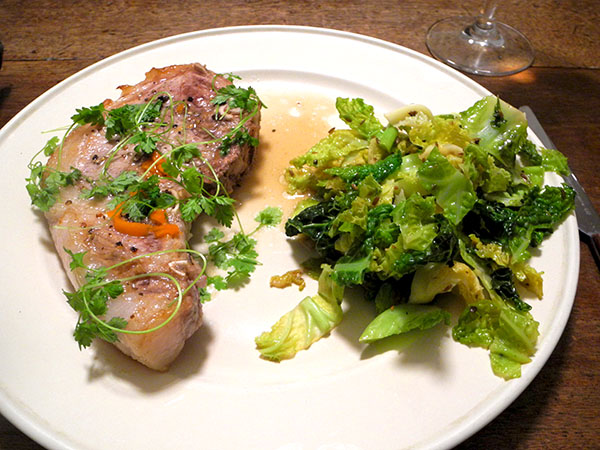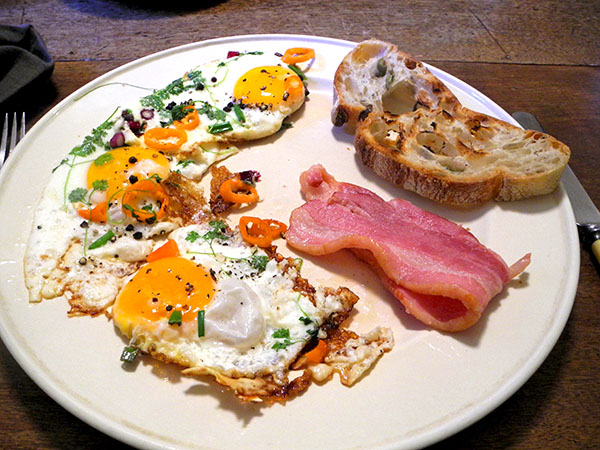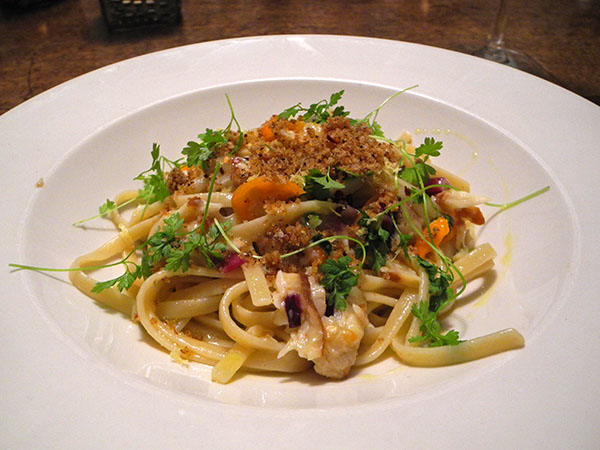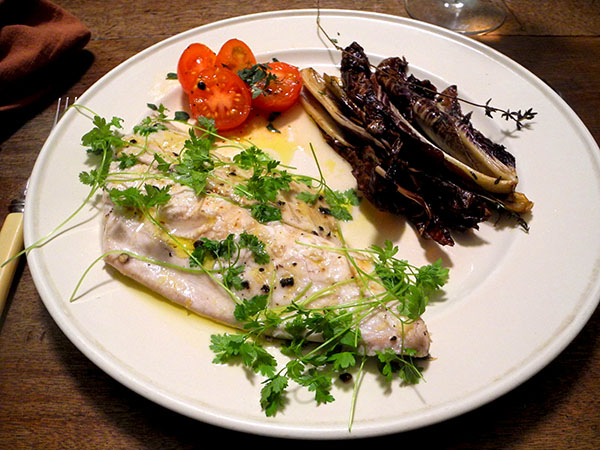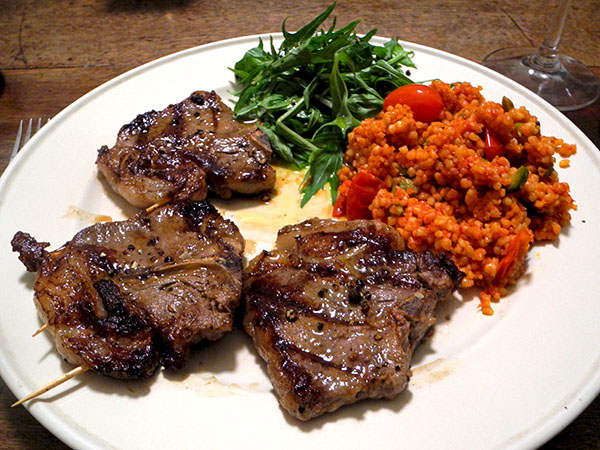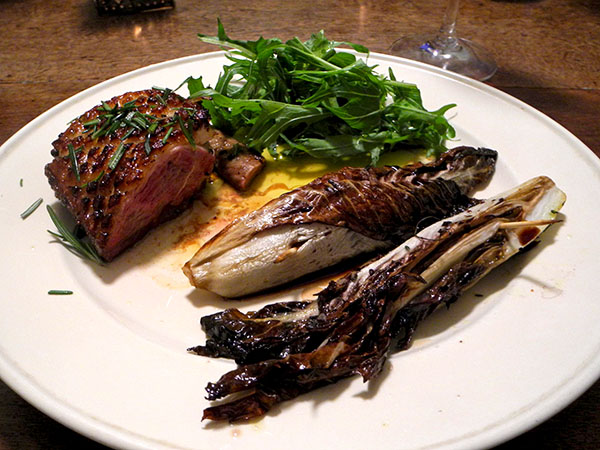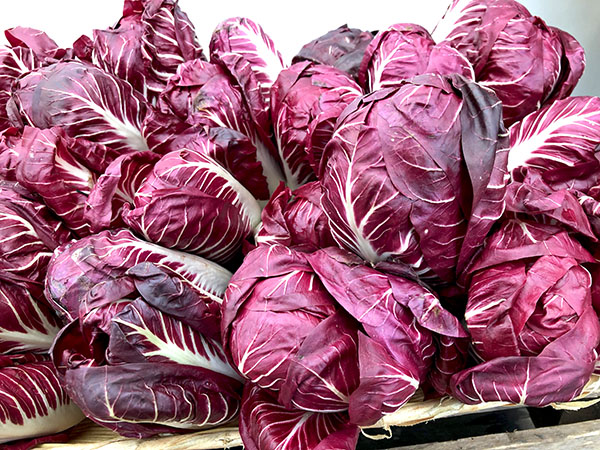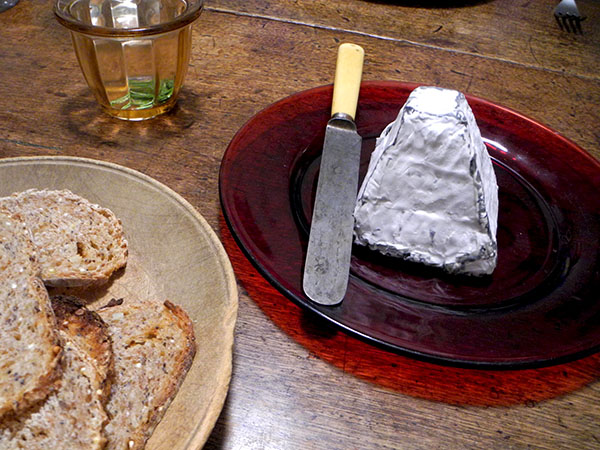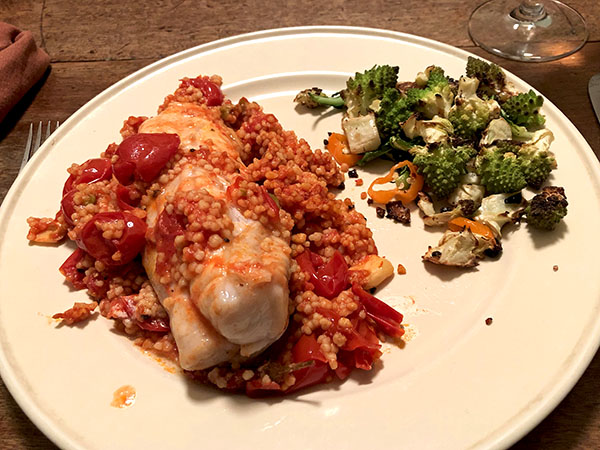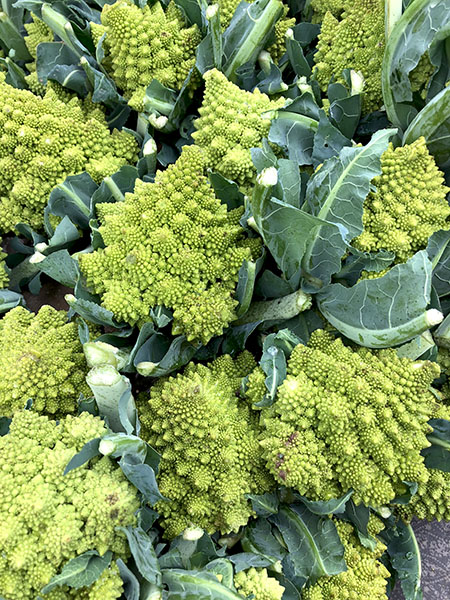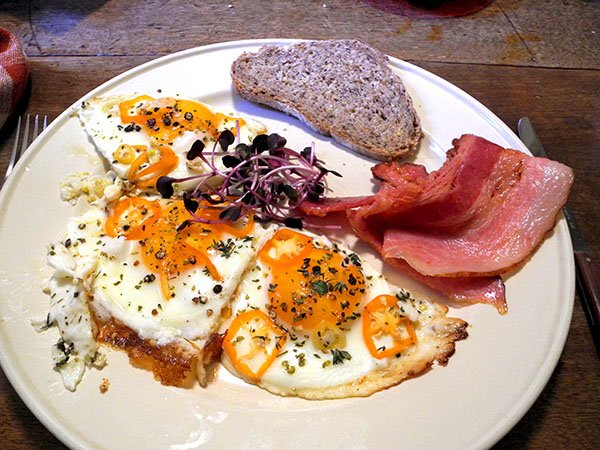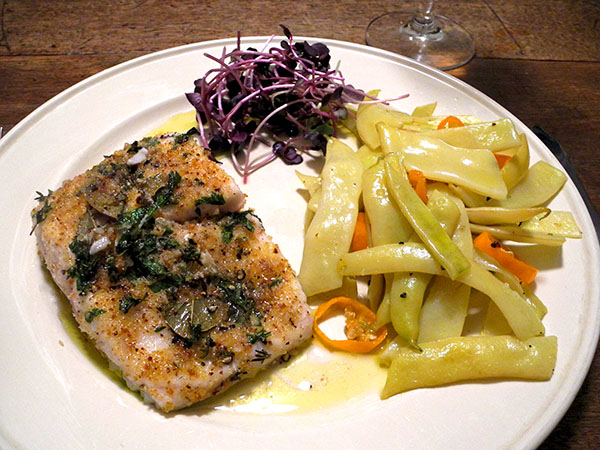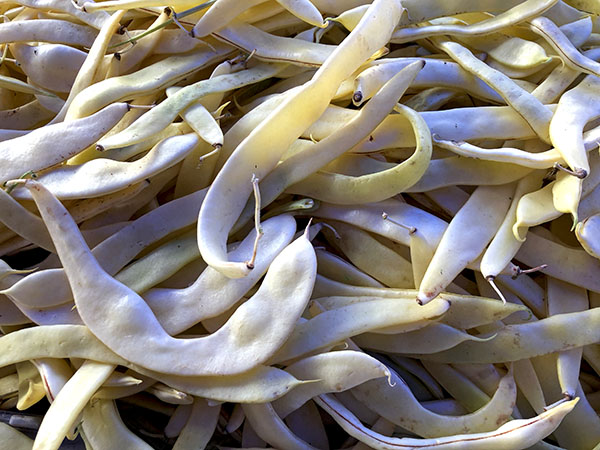
We were having a guest for dinner, but there was to be some serious conversation about a joint project before we sat down. I wanted to serve fish, and in fact the date for our gathering was settled partly on the basis of it being a Greenmarket day, where I might find at least one fish stall. Because of the focus of the evening the entrée choice couldn’t be too time-consuming or distracting, but it should be expected to please.
I picked skate wings, and I slightly abbreviated the recipe I use most of the time, but it all worked out fine, with the help of some great eggplant.
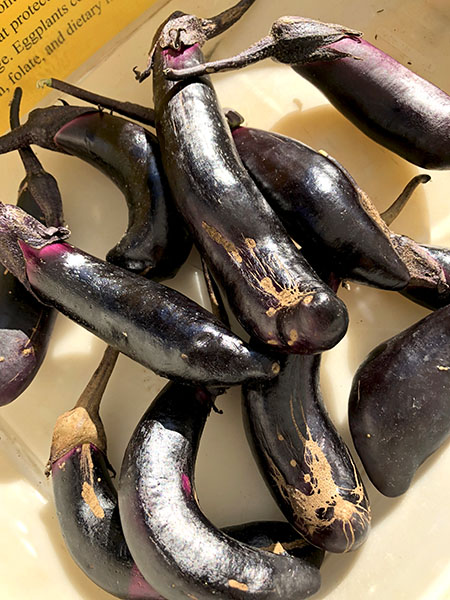
- six small skate wings from P.E. & D.D. Seafood, coated all over with a local coarse polenta (‘Stone-Ground Polenta’ from Wild Hive Farm Community Grain Project), seasoned with salt and pepper, sautéed in olive oil and a bit of butter for 3 minutes or so on each side inside 2 heavy enameled cast iron oven pans (to avoid crowding), removed to the plates and kept warm while about 1 to 2 tablespoons of butter and sliced red scallions from Hawthorne Valley were introduced into the pan and stirred over a now-lowered flame, just enough to allow the onion to sweat a bit before the heat was turned off altogether and another 1 to 2 tablespoons of butter added to the pan along with the juice from a little more than half of a local sweet lemon from Fantastic Gardens of Long Island, the pan stirred for a bit to blend everything and make a proper sauce, which was poured over the skate wings, which were garnished with a scattering of micro chervil from Two Guys from Woodbridge
- green and purple leaf lettuce [from Lani’s Farm, I think], dressed with a good olive oil, salt, and pepper
- six small Japanese eggplants from Lani’s Farm, each cut in half lengthwise and brushed with a mixture of olive oil, finely-chopped Rocambole garlic from Keith’s Farm, chopped peppermint from Lani’s Farm, sea salt, and freshly-ground Tellicherry pepper, the eggplant pan-grilled, turning once or more, then arranged on an oval platter, sprinkled with more chopped peppermint, and drizzled with a little olive oil
- there were many wines, but all except for the New Mexico (Sierra County) sparkling white, Gruet Brut NV, from Astor Wines & Spirits, which preceded the meal, were from Naked Wines; the first still wine was a California (Sonoma) white, Scott Peterson Rumpus California Sauvignon Blanc 2016
- the music was our conversation
